Paved paradise and put up a footpath: Why air purifiers alone won’t save Dhaka’s lungs

Once upon a time not so long ago, Dhaka streets had trees. No, not the manicured traffic island flower bushes planted for photo ops, but the kind that stood silently outside homes, filtering dust, cooling the air, and occasionally dropping coconuts on unsuspecting passersby.
Before footpaths were paved over, there was a strip of soil between the street and the boundary wall. It wasn't fancy. It wasn't landscaped. But it was enough. People planted trees. They grew. They cleaned the air without needing a city corporation tender or a sponsorship deal.
Recently, Dhaka North City Corporation (DNCC) has announced a plan to install air purifiers in 50 spots around the city. "Each one," we're told, "will purify the air like 100 trees." It's a noble thought, and one can't deny the intention behind it. But in a city choking on dust, diesel, and disregard, we need to ask: are these air purifiers a solution, or just a glossy distraction?
The purifier paradox
Outdoor air purifiers? Yeah, they exist. You'll find them in the Netherlands, China, and in some fancy pilot projects in cities trying to detox one breath at a time. But these machines work like mood lighting — nice in the corner, but they don't brighten the whole room. Most can only filter the air within a few meters around them. And Dhaka's air pollution? It doesn't politely stay within a few meters. It floats, it spreads, it clings to your clothes and crashes on your balcony like an overstaying relative.
The Dutch have their 'Smog Free Tower', built by artist Daan Roosegaarde — a sleek 7-meter column that ionizes and cleans about 30,000 cubic meters of air per hour. Germany rolled out the 'CityTree', a moss-covered mobile wall that supposedly does the work of 275 trees — though most scientists raise an eyebrow and a skeptical smirk at that claim. China went big with the 'Xi'an Smog Tower', standing 100 meters tall, solar-powered, and supposedly capable of filtering millions of cubic meters daily. It sounds like science fiction — mostly because its real-world results still haven't cleared the fog.
Here's the real issue: these purifiers clean small bubbles of air. We're talking in meters, not kilometers. Putting up 50 air purifiers in a city of 22 million is like trying to cool down a stadium with a table fan. Throw in the constant upkeep of power bills, filter changes, occasional kicking when it malfunctions, and it starts looking less like a solution and more like a press release in a shiny box. Especially in a city where streetlights blink like they're on their lunch break.
What we've lost (and what we could get back)
Instead of mimicking trees with machines, why not just… plant trees?
The good news? We don't need banyan behemoths tearing up sewer lines. Bangladesh already has a bunch of native trees that grow fast, keep their roots polite, and don't mind a Dhaka thunderstorm or two. Neem, Arjun, Raintree, and Palash. These are tough, shady, and best of all, they photosynthesize without needing a socket.
But here's the kicker: a study cited in Prothom Alo, conducted across Ramna Park, Suhrawardy Udyan, and the Dhaka University area, found that a whopping 58% of the trees there are foreign species. Of those, 33% were planted just for the 'aesthetic' — in other words, they look good, but don't do much else.
And that's where it gets messy. A lot of these exotic imports come with soft bark, meaning one good gust and down they go. Meanwhile, contractors in charge of planting can't always tell a hardy native from a decorative liability. So we end up with trees that snap in storms and purifiers that hum in traffic, while the real solution that is strong, local, rooted, stands ignored.
But we've paved over the soil they once grew in. Footpaths are now tiled slabs laid over concrete beds, leaving no space for roots to take hold. Homeowners can't plant a tree even if they wanted to. You'd need permission, maybe a bribe, a two-week wait, and a backup plan in case the city comes with a jackhammer.
A better way forward
So here's an alternative plan, and no, it doesn't involve foreign consultants or imported filters (probably).
- Footpath Green Zones: Allocate 1x1 meter soil patches every few meters on footpaths for tree planting. Protect them with metal grates. Let them breathe. Let them grow.
- Approved Urban Species: Create a city-wide list of approved fast-growing, shallow-root trees. Assign species per neighborhood based on soil and space.
- Citizen-Sponsor Trees: Let businesses or families sponsor a tree and get a small tag with their name. Less ego than a billboard, but infinitely better for air quality.
- Construction Dust Regulation: Stop trucks from dumping bricks and sand on roads. Enforce netting and regular water spraying at construction sites. Fine the ones who don't comply.
- Retire the Real Polluters: The 20-year-old diesel vehicles. The unregulated rickshaws with lead-acid batteries. The brick kilns just outside the city limits. If you want to clean the air, start with the things that are actively dirtying it.
Breathing isn't a luxury
Let's be honest — no one's against air purifiers. But placing a few shiny machines in a city drowning in toxic haze is like handing out umbrellas in a flood. It makes for a nice press release. It won't save our lungs.
Clean air shouldn't be treated as a side project or a showpiece. It's a right. And in the fight for breathable cities, trees are still the most affordable, sustainable, and beautiful air purifiers we have.
Maybe, just maybe, it's time we gave them some space again.

 For all latest news, follow The Daily Star's Google News channel.
For all latest news, follow The Daily Star's Google News channel. 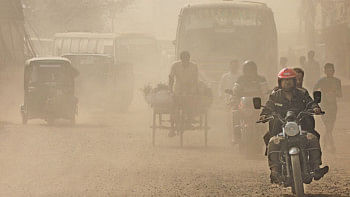



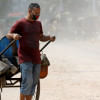
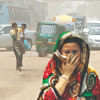
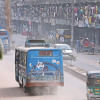


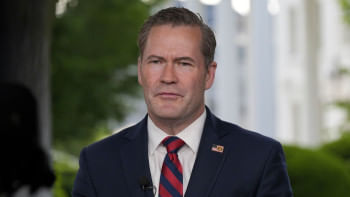
Comments